
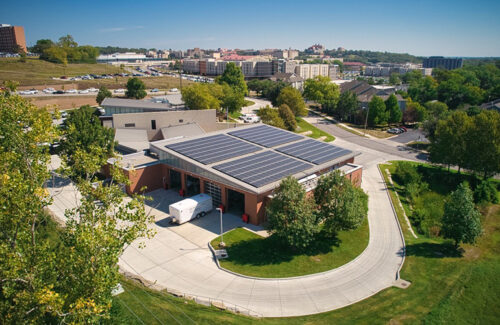
Good Energy Solutions is pleased to announce a new partnership with Brightwell Capital aimed at accelerating the adoption of clean energy by non-profit organizations, churches, and government agencies. This plan will open the door for mission oriented organizations, helping them reduce operating costs, improve energy resilience, and reduce their carbon footprint, while also providing investors with opportunities to receive returns that align with their values. Many institutions serving the public, whether providing food for families, educating students, or offering important services, are interested in using solar energy but face significant financial barriers. Due to the inability to enjoy the same tax benefits as for-profit enterprises, many institutions have found that solar energy is out of reach. Through this new collaboration, Good Energy Solutions provides expertise in engineering and installation, while Brightwell Capital offers financing solutions utilizing tax credits, incentives, and innovative investment structures. Ultimately, these organizations can obtain solar energy without incurring high upfront costs. The working principle of this model is as follows: Investors provide eligible funding for solar and energy storage projects to non-profit organizations, churches, and public sector organizations. They receive returns through tax incentives and long-term project income, while generating measurable environmental and social impacts. Organizations can immediately save energy, reduce dependence on the power grid, and avoid the impact of rising electricity rates. By constructing the project in this way, Good Energy Solutions and Brightwell Capital enable non tax paying organizations to still enjoy the value of tax credits, effectively directing federal incentives to local communities. Kevin Good, the owner of Good Energy Solutions, stated that the collaboration with Brightwell Capital is not only about building solar projects, but also about helping organizations that work hard to serve their communities eliminate barriers. By combining our expertise in clean energy with Brightwell's innovative financing, we enable non-profit organizations, churches, and public institutions to harness the savings and resilience brought by solar energy, while also providing an effective way for impact investors to fully leverage their funds. ” For community organizations, reducing energy costs means having more funds available to fulfill their mission. For investors, this is an opportunity to participate in the transition to clean energy, while also knowing that their funds are helping schools, shelters, churches, and public services thrive.
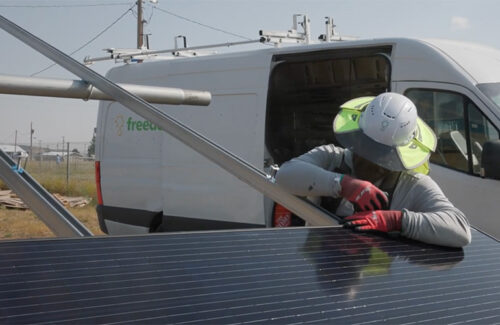
Indigenized Energy, a non-profit organization dedicated to promoting tribal energy sovereignty, has completed its third solar energy collaboration project with Freedom Forever. The common mission of this collaboration is to bring clean energy to indigenous communities. The latest fully off grid solar and battery system is currently supplying power to a remote water buffalo farm on the North Cheyenne Reserve in Montana, providing reliable, emission free electricity to this culturally significant area that cannot be connected to the grid. This is the third deployment of solar energy projects by indigenous energy companies and the "Eternal Freedom" organization. Prior to this, they had already deployed solar energy projects in the North Shayan community, as well as the Oglalasu and Chipawakri reservations. Each project aims to create long-term community benefits, promote indigenous self-determination and environmental protection. Our goal has always been to provide our community with tools to support its prosperity, "said Cody Two Bears, founder and CEO of Indigenous Energy Company. Solar energy is not just energy - it represents sovereignty, sustainability, and hope. These projects are helping us gradually restore indigenous peoples' right to self-determination Many communities where we work do not have local solar labor or contractors, "Two Bears added. These communities are located in remote rural areas with complex environments. Freedom Forever has a strong drive to carry out these projects in places beyond market reach. This is precisely why this collaboration is so important. ” The cooperative relationship between the two parties is still constantly developing. In addition to ongoing new projects, the two institutions recently collaborated on a short documentary called 'Beautiful Energy', which tells the story of tribal solar energy students, elders, and communities working together to regain energy sovereignty and resilience. The film praises clean energy not only as infrastructure, but also as a source of healing. With the implementation of more installation projects and support for the national "National Solar Energy" plan, local energy and free eternal are not only building solar energy systems. We are honored to work alongside local energy companies and support their mission of achieving energy sovereignty through concrete and down-to-earth actions, "said Brian Eglsaer, Chief Operating Officer of Freedom Forever. These projects are not just solar installations, but also powerful measures towards long-term transformation of tribal communities
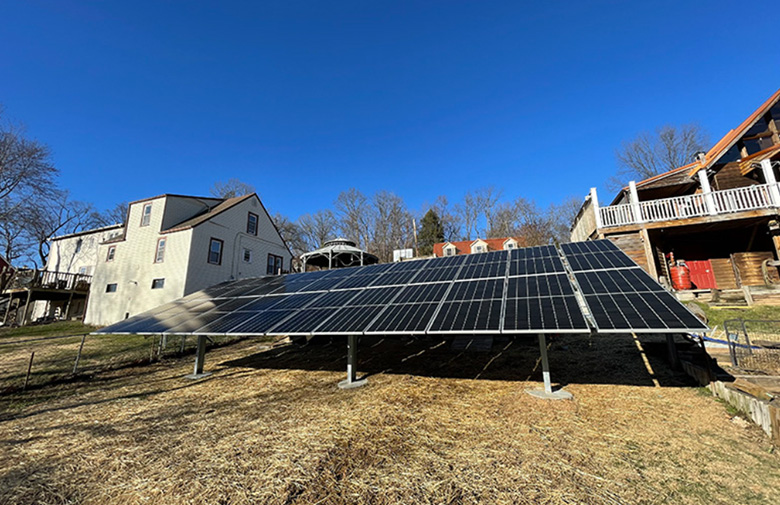
Residential solar projects are usually built on the roof by default, as homeowners typically have a roof but may not have space in their yard to install solar arrays. If there is enough space outside the residential area to install solar energy, installing and maintaining photovoltaic arrays will be more advantageous and, in some cases, more economical. Taylor Mills runs Advancing Solar Solutions, a photovoltaic contractor located in Ripley, West Virginia. He is one of the few residential installers who works more on ground installations than on rooftops. He estimates that 65% of his business comes from ground mounted solar projects, with a portion coming from rural areas in West Virginia, Pennsylvania, and Ohio, which typically have ample land for such construction. I will never receive a phone call again saying, 'Hey, my roof is leaking, I think it's because of the solar panels you installed.' I no longer have to answer calls to install solar panels on the ground, "Mills said. Although this situation is not common, the cost of installing ground-based solar cell arrays by Advancing Solar Solutions is lower than that of rooftop projects. Mills shared a pricing example for a solar project that installed both rooftop and ground solar arrays for a client, with the latter being cheaper by over $3000. The cost difference is mainly due to Mills' tendency to use Enphase micro inverters in rooftop projects to meet fast shutdown needs and provide module level monitoring for customers. However, some cost saving advantages are not limited to the selection of components. Compared to courtyards, roof space may be limited. Rooftop solar arrays may be able to meet most of a household's energy needs, but the exact quantity depends on available space, while ground mounted solar arrays can provide over 100% of energy, using solar energy to deliver more electricity to the grid, resulting in higher net metering compensation and shorter system investment payback period. Hilary Fiene, Chief Office Manager of Stateline Solar, stated that the prices for residential floor and roof installations are comparable. Stateline Solar's customers are located in rural communities and towns, with approximately half of the company's residential solar power generation coming from ground installations. Rural people can choose rooftop installation instead of ground installation, while those living in the city usually can only choose rooftop installation, "Fien said. The approval process in most towns does not allow for ground installation. However, due to the large number of rural residents in our region, this has given us more opportunities for ground installation. Compared to rooftop projects, the cost of installing support structures on the ground is higher. These systems use steel brackets that need to be driven into the ground, fixed to a concrete base, or secured using non penetrating heavy-duty ballast blocks. Then connect the steel brackets to these brackets to secure the solar...

Pivot Energy, a national independent renewable energy producer, and the University of Colorado Boulder officially started construction on a 5-megawatt DC virtual net metering solar project in Wilde County, Colorado last week. This milestone marks a new phase in the partnership first announced by both parties in July 2024, and will support the university's broader clean energy goals while advancing its climate action plan. Pivot Energy will develop, own, and operate the off-site project, which is expected to be completed in early 2026. According to a 20-year subscription agreement, the University of Colorado Boulder will benefit from the virtual net measurement program established by Colorado Senate Bill 21-261 in 2021. This project allows the university to subscribe to off-site energy production and earn points in its electricity bills, as well as 100% renewable energy credits for the project. The solar cell array will also offset the electricity consumption of the University of Colorado Boulder and advance its Scope 2 greenhouse gas (GHG) emission target of reducing emissions by 50% by 2030, and achieving carbon neutrality by 2050. The project is cost neutral. Justin Schwartz, President of the University of Colorado Boulder, said, "The collaboration with Pivot Energy is a powerful example of how the University of Colorado Boulder leads the future with goals. We are not just talking about sustainable development - we are integrating it into our operations in a way that is both financially responsible and environmentally beneficial. ” After the completion of the project, it is expected to generate approximately 9.5 million kilowatt hours of solar energy annually. The approximately 8000 solar panels laid end-to-end in the project are enough to fill four football fields. In addition, the project will also integrate agricultural photovoltaic systems. From April to October each year, about 100 sheep will provide on-site "sheep house management" services to manage vegetation. Local ranchers will provide additional pastures at the project site. Mat Elmore, Senior Vice President of Strategic Clients at Pivot Energy, stated, "Pivot Energy is honored to collaborate with the University of Colorado Boulder on this project and looks forward to its commencement. For the largest university in Colorado and Pivot, this is a win-win situation - it not only helps the University of Colorado Boulder achieve its renewable energy goals, but also accelerates the country's transition to solar energy.
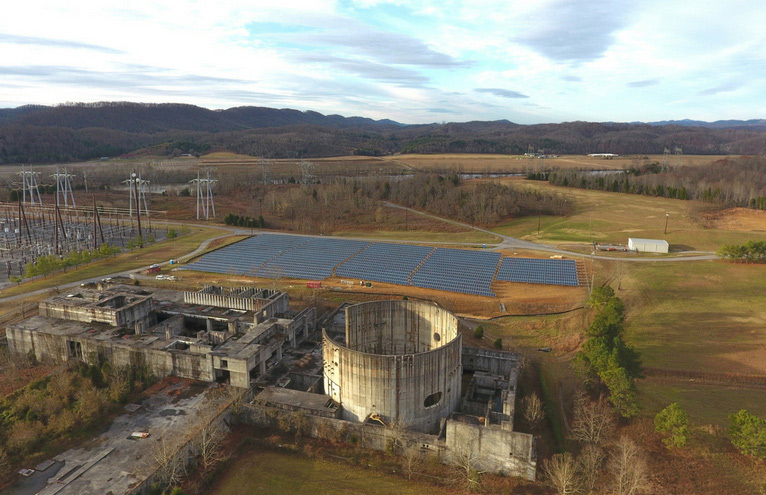
A real estate investment group plans to transform an unfinished nuclear power plant site into an advanced manufacturing park, based on the new polysilicon manufacturer Highland Materials. The original site of the Phipsbend Nuclear Power Plant in Hawkins County, Tennessee, covering approximately 140 acres, is planned to be transformed into a "high-power, heavy-duty infrastructure destination. The nuclear power plant already has a regional transmission interconnection line owned by the Tennessee Valley Authority (TVA) and a 1-megawatt solar project completed in 2017. David Robbins, Managing Partner of Pivot Manufacturing Partners, said, "We are honored to invest in a unique location like Phipps Bend to support the development of Northeast Tennessee. The park integrates excellent critical mission infrastructure, rare high-voltage interconnection systems, and a licensed environment influenced by nuclear heritage - all located in an area eager for transformational capital investment. We are honored to collaborate with Highland Materials to advance their planned factory construction, and look forward to continuing to work with all local partners to make Phipps Bend the preferred destination for the next generation of high-power industrial revival. ” The Phipsbend Nuclear Power Plant was initially developed by the Tennessee Valley Authority (TVA) in the late 1970s as a nuclear power plant. After the Three Mile Island nuclear accident, the project was cancelled in the early 1980s but was ultimately not completed. Although the nuclear power plant has never been put into operation, it still retains important historical heritage: important public infrastructure, strategic position in the TVA transmission network, and regional development concepts rooted in energy intensive industries. At least in the past year, there have been rumors that Highland Materials will establish a new polysilicon product factory at Phipps Bend. The company obtained a qualified advanced energy project credit (48C) of $255.6 million under the Inflation Reduction Act last year. At that time, the company stated that its initial annual production of solar grade polycrystalline silicon would be 16000 tons, and it would expand to 20000 tons, equivalent to producing 11 gigawatts of solar cells annually. Richard Lasseter, CEO of Highland Materials, stated that partnering with Pivot Manufacturing Partners is a crucial step in driving the development of Highland's polycrystalline silicon manufacturing plant in the Phipps Bend project. We are excited about the market opportunities, job opportunities created, capital investment, and continued support from the community and state government that this project brings. ”
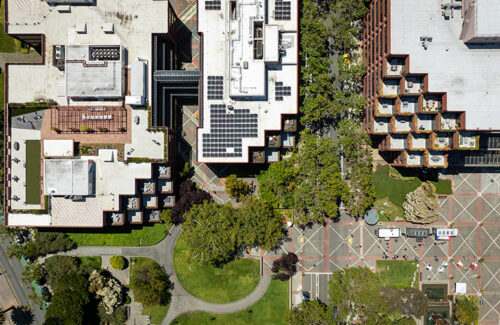
Jamestown, a global real estate investment and management company, announced the installation of a 200 kilowatt solar system at Levi's Plaza. Levi's Plaza is an office park covering nearly 1 million square feet, located on the waterfront waterfront in the northern part of San Francisco. Jamestown has partnered with commercial energy solutions provider Wunder to deploy the solar system, which was put into use in June of this year. The Levi's Plaza project is part of a broader collaboration with Wunder aimed at evaluating and deploying solar energy in suitable locations for Jamestown real estate investment portfolios and development projects. Rooftop solar energy is part of a $50 million renovation project that also includes eliminating on-site fossil fuels, converting heating systems into electricity, and offsetting remaining emissions. Alex Schwiebert, Senior Vice President and West Coast Regional Market Leader at Jamestown, stated that achieving net zero operational carbon emissions requires a multi pronged approach, and deploying a robust solar system at Levi's Plaza is a key component of this strategy. It has been proven that sustainable development initiatives like this are a key driving force in attracting tenants while also reducing energy costs. ” Levi's Plaza is located along the Embarcadero waterfront in the northern waterfront market of San Francisco. Founded in 1981, it is the headquarters of the iconic clothing brand Levi's. Jamestown acquired this nine building park in 2019 and is committed to preserving the characteristics and significance of its open space designed by renowned landscape architect Lawrence Halprin, while also providing new amenities and higher efficiency for modern employees. The tenant base of Levi's Plaza is diverse, including Levi Strauss&Company, Snap, and Supercell.
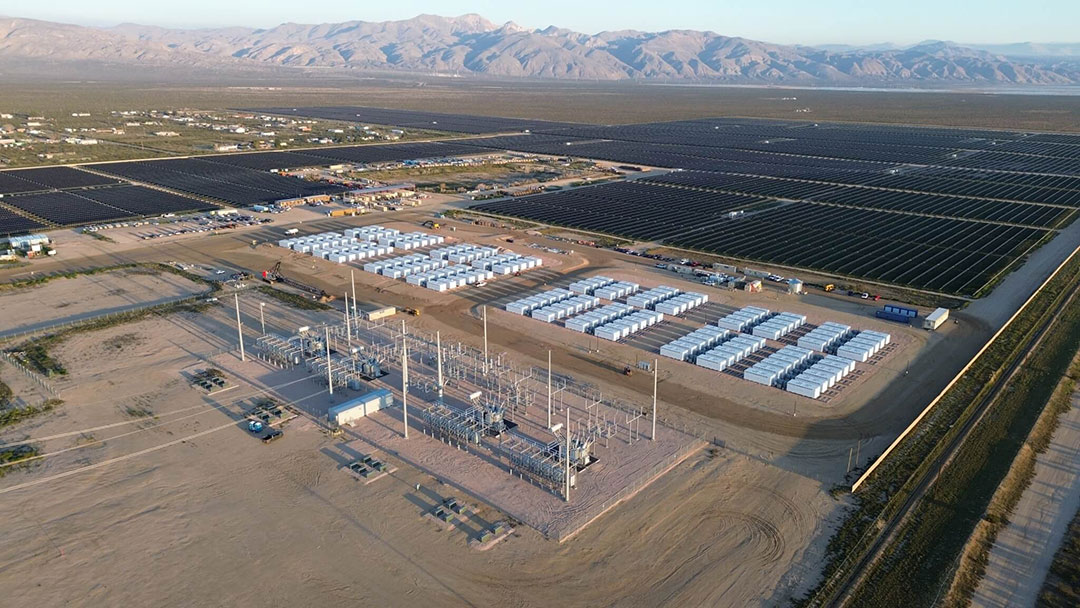
The Eland solar+energy storage project developed by Arevon Energy is now fully operational. The project is divided into two phases and is located near the Mojave Desert in Kern County. It is one of the largest solar+energy storage facilities in the United States, with a total investment of over $2 billion. The Eland project consists of 758 MW DC solar power generation facilities and 300 MW/1200 MWh energy storage systems. The Eland Phase I project will be put into commercial operation by the end of 2024, while the Eland Phase II project has recently been fully operational - consisting of 1.36 million solar panels and 172 lithium iron phosphate (LFP) batteries. Los Angeles Mayor Karen Bass said, "We are building a greener Los Angeles. Arevon's Eland solar+energy storage project alone can provide enough electricity to over 266000 households in Los Angeles and increase the city's clean energy share to over 60%. This is an important milestone in Los Angeles' transition to 100% clean energy by 2035. ”This is the future of clean energy in Los Angeles - I want to thank the Los Angeles Water and Electricity Authority, Arevon, and all the partners who made this moment possible. ” The energy produced and stored by Arevon's Eland has signed a long-term agreement with the Southern California Public Power Authority (SCPPA) to deliver it to its members, the Los Angeles Water and Electricity Authority (LADWP) and the Glendale Water and Electricity Authority (GWP). Arevon CEO Kevin Smith said, "The launch of the Eland solar+energy storage project is a milestone achievement for Arevon. Eland is not only the largest project in our investment portfolio, but also provides reliable and affordable energy on a large scale, demonstrating our team's leadership in driving the future development of renewable energy in California. ”The close cooperation between project landowners and community members, as well as our power purchase and financing partners, is crucial to our achievement. We are pleased to provide stable and safe local electricity to Los Angeles residents and contribute to the state's renewable energy goals - while supporting local communities and investing in long-term sustainable development Tesla batteries are locally produced in Las Rop, California, and can efficiently and quickly release electricity during peak usage periods, enhancing California's energy security, especially in extreme heat, power restrictions, and power outages. The construction of Eland 1&2 nuclear power plants has created approximately 1000 job opportunities, and it is expected that the project will pay over $36 million to the local government throughout its entire lifecycle to support school, public service, and necessary infrastructure upgrades.
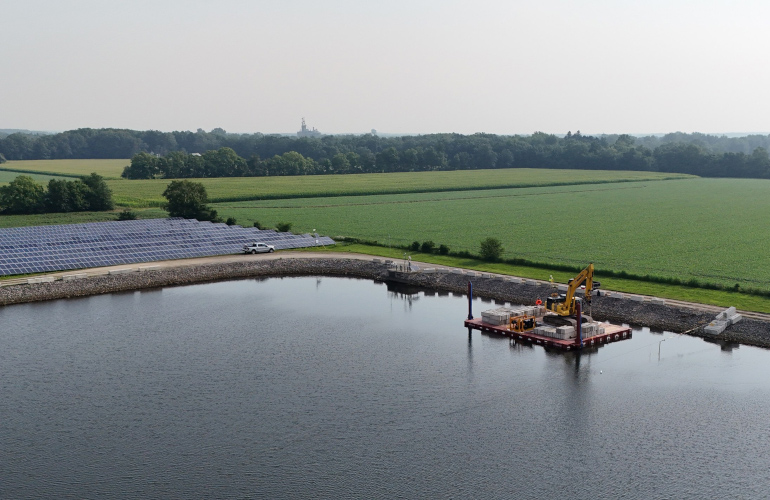
D3Energy has officially launched a plan to build a 6-megawatt floating solar system for Monroeville Village, which will become Ohio's largest floating solar installation and one of the largest floating solar installations in the United States. The system, led by the village of Monroeville and developed in collaboration with D3Energy, will be connected to the local distribution network in Monroeville, providing clean and renewable energy for households and businesses throughout the community. According to a long-term power purchase agreement, Monroeville Village will purchase electricity from the project owner Gardner Capital. Stetson Tchividjian, Managing Director of D3Energy, said, "We are honored to have collaborated with Monroeville in the early stages of this project. Their foresight and perseverance have been key to our current achievements. Monroeville has long been a leader in the energy sector, and through this project, they will utilize more green energy than many larger counties and cities across the country. They have set a bold example and demonstrated how rural communities can play an important role in promoting clean energy development The project utilizes the existing reservoir in the village, saving over 30 acres of land that was originally needed for traditional ground installation systems. In addition to saving land, floating solar energy also has environmental benefits such as reducing evaporation and improving water quality. D3Energy has formed the same team as the successful delivery of the Del Co Water floating solar project in 2023, and has once again partnered with Gardner Capital and local contractor ARP Solar to provide support for the installation in Monroeville. They have extensive experience in floating solar energy development and extensive field experience in Ohio. At present, the project is under construction and is expected to be put into use in early 2026.

If approved by local and state government officials, the new stadium of Virginia minor league baseball teams will soon be equipped with a 1 megawatt solar system The Richmond Flying Squirrels are a Class 2A affiliate team of the San Francisco Giants and will play the 2026 season at the newly constructed CarMax Park stadium. This new stadium will become a landmark building in Richmond's newly named Diamond District, which is currently undergoing reconstruction. After the end of the 2026 season, Dominion Energy Virginia plans to install over 1700 solar panels on the double layered roof of the CarMax Park stadium and build five solar covered carports in adjacent parking lots. We are pleased that this iconic building in Richmond can provide our customers with reliable, affordable, and increasingly clean electricity, "said Ed Baine, Executive Vice President of Utility Operations and President of Dominion Energy Virginia If approved by regulatory agencies, the project will further strengthen Dominion Energy's growing solar power facilities in Virginia. The sports stadium project will also assist the company in utilizing previously developed land to construct some power generation projects. This solar project embodies a comprehensive collaborative approach that is crucial for achieving Richmond's clean energy goals. It is a great example of how public, private, and community partners can work together to create a more resilient and sustainable future, "said Laura Thomas, Director of the Richmond City Office of Sustainable Development
Categories
New Products
Tin Roof Rapid Solar Mounting System with Hanger Bolt Read More
Residential Small Solar Easy Bracket Kit for Home Balcony Read More
Automatic Single Pile Solar Tracker with 10 PV Panels Read More
Angle Adjustable Aluminum Easy Solar Panel Bracket for Garden Read More
Intelligent Single Post Dual Row Solar Tracking System Read More
5000ES Solar Off-Grid Energy Storage Inverter Supplier Read More
Multi Drive Double-Sided Single Axis Tracker System Read More
© Copyright: 2026 Xiamen Wintop New Energy Tech Co., Ltd.. All Rights Reserved.

IPv6 network supported
Friendly Links:
Integrated Solar System